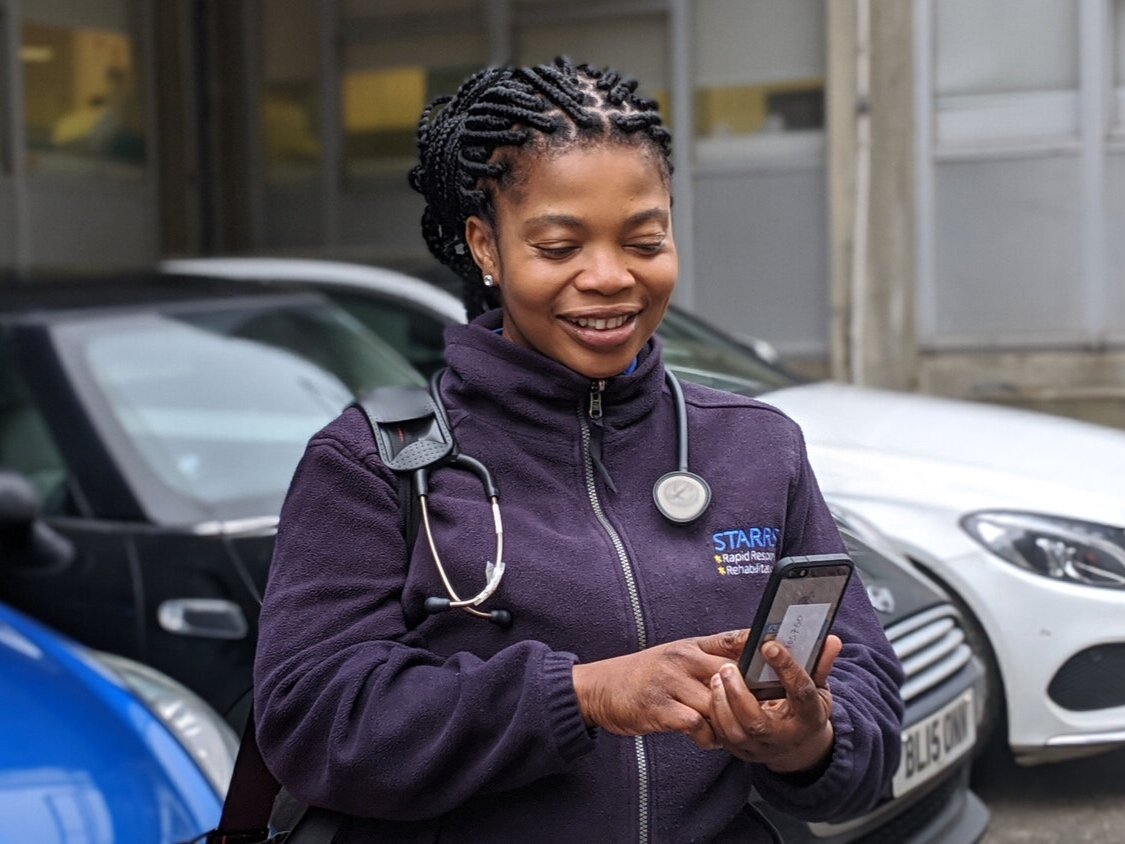How virtual wards can help reduce the NHS backlog
by Dr Jo Garland
Image source: nurses.co.uk
Last month, NHS England announced a £160M funding boost to help the NHS recover from COVID-19 and reduce waiting lists. The money will be split between 12 ‘elective accelerators’ which will implement and evaluate innovations to increase the number of elective surgeries carried out in the coming months. Patients will benefit from trials of ‘virtual wards’ amongst other initiatives designed to reduce the surgical backlog. Here, our Clinical Director, Dr Jo Garland discusses virtual wards and how they could help.
What are virtual wards?
Virtual wards in this context exist where patients are discharged after surgical procedures to be looked after at home instead of in hospital. Multidisciplinary healthcare teams coordinate care between both community and hospital teams, ensuring that patients receive targeted specialist care and continue treatment, for example intravenous medication or physiotherapy. Patients submit health readings remotely and may receive visits from healthcare professionals. Any additional problems can be diagnosed, appropriate investigations organised and support provided.
Utilising virtual wards has the benefit of reducing delays in hospital discharge and freeing up hospital beds so more patients can undergo surgery, whilst still supporting recovery in a way that is safely managed by medical professionals.
Delayed hospital discharge ultimately leads to bed-blocking which is a £550 per minute (and growing) problem. IInvesting in ways to help discharge patients in a timely manner, or in the case of virtual wards, early, will help reduce the number of patients who have already waited more than a year for treatment. This is currently 153 times greater than it was in November 2019.
The idea of virtual wards is not new to the NHS and has been used to support unwell and deteriorating patients stay at home rather than come into hospital, as well as to discharge patients sooner. County Durham and Darlington NHS Foundation Trust is one example of a trust that has trialled virtual wards for vulnerable patients, whilst NHS Tees Valley Clinical Commissioning Group has been recently running virtual wards where COVID-19 patients are discharged home and submit blood oxygen readings from an app for clinicians to monitor remotely. London North West University Healthcare NHS Trust also has a well-established early supported discharge and rapid-response service which aligns with the virtual wards concept, and sees over 9,000 patients each year that would otherwise likely be in hospital.
Can virtual wards really reduce the backlog?
The idea of virtual wards a relatively simple one, but the logistics of sending out clinicians to people’s homes, carrying out remote monitoring, coordinating the different specialists that are required for recovery and rehabilitation, and liaising with others that may be involved (for example: GPs, community care teams, district nurses, mental health services, social care, the patient and their family) is a complex task.
Practically, for virtual wards to work, NHS organisations need access to remote monitoring equipment, reliable internet connections to connect to it, appropriate staff to carry out home visits when necessary and oversee patients who are at home, and a patient record system. Across this should be a digital task management system – like Infinity – that can be accessed by all the necessary multidisciplinary health and care staff from anywhere. This combination would ensure that staff can efficiently and safely manage their virtual ward caseload, share information and collaborate with other disciplines or services easily. Connecting the whole team virtually would enable full visibility of operational and clinical tasks, which in turn would allow senior staff to support junior staff in real-time, helping to minimise stress and overload. Virtual ward rounds can be conducted with all the information in one place and decisions can be made about treatment and resource management in real-time.
Staff shortages are an issue and could be a limiting factor to setting up virtual wards, but with the addition of a task management solution in addition to the other resources, staff could work more efficiently and save time. This can make a huge difference - whether that’s seeing more patients in a day, spending more time with individual patients, or being able to manage larger caseloads across virtual wards safely and effectively.
I believe that the approach of virtual wards – for both surgical and non-surgical patients – is a step in the right direction to getting the NHS back on its feet and providing treatment to the many patients that are waiting as a result of the backlog. Appropriate digital tools are a key part of this, and Infinity is perfectly positioned to meet the NHS’s task management needs for the future.
About the Author
Dr Jo Garland
Dr Jo Garland worked as a General Practitioner in North West London for several years, before making the move into NHS training and facilitation and then healthtech.
Jo believes that staff need the right tools to manage their everyday workload, and focuses on how technology can reduce the administrative burden and allow more time to care. She is passionate about joining-up care between primary, secondary, and community care within the NHS.
At Infinity, Jo’s primary goal is to work with healthcare professionals to understand their current efficiency challenges, and support the roll-out of our digital solution to solve them.
Prior to joining Infinity, Jo led health coaching programmes for patients with long-term conditions, working to reduce inappropriate A&E admissions. She also previously worked on the nationally-funded NHS Right Care Shared Decision-Making Programme, facilitating the production of patient decision aids.








